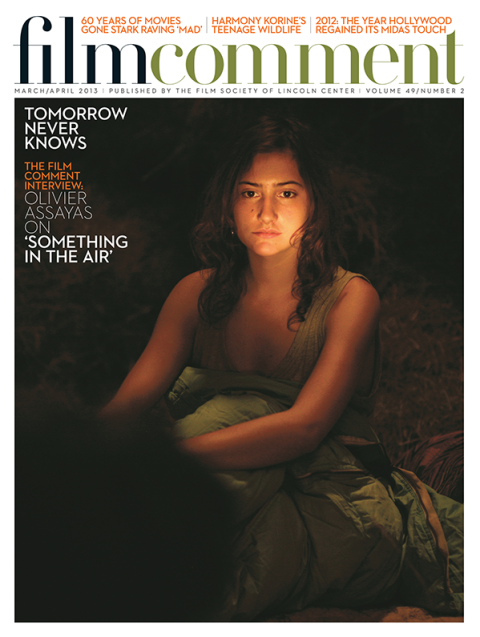
Terence Nance’s debut feature and festival favorite, An Oversimplification of Her Beauty, is anything but. It is a visually and aurally intricate collage that mimics quixotic, obsessive contemplation, the kind of over-thinking commonly associated with lovers and artists for millennia.
A mapping would be more appropriate than a synopsis, in order to trace the strands that are woven into this film from an earlier version, How Would U Feel?, made six years prior at NYU. In the whirlwind opening, a narrator, sounding vaguely like Orson Welles, promises an “educational” film with theories about a “singular emotion” and introduces one Terence Nance (the writer-director playing himself), who ruminates, via multiple means and media, on his amorous relationships with several lovely young Hers (all, as he prefers, brown-skinned, bookish, well-traveled, and musical), and currently embodied by Namik (Namik Minter), the unavailable muse of both of Nance’s films. But put more simply: boy meets girl, boy waits for girl, boy misses girl’s phone call…
A multimedia hybrid of narrative and documentary that employs experimental techniques, Oversimplification has the feel of a journal or sketchbook. Private notes, doodles, photos, and drawings morph into illustrated titles and remarkably varied animated sequences (Nance collaborated with several different artists), the visual manifestations of Terence’s dreams and emotional states. The motif of analog technology—images of pausing and switching cassettes and the mixtape/needle-drop soundscape, also created by Nance—further reinforces the impression of a handcrafted texture, as does its epistolary nature with much of the “story” framed by letters, texts, and phone messages.
But the film is ultimately a digital creation. Non-linear and non-destructive editing tools encourage tangential visual thinking and Nance playfully utilizes numbering systems (versions, dates, timelines) to organize the material, rehashing his thoughts as he reworks the film, leaving the narrative open and fluid. On first viewing, as I struggled to grasp Nance’s constantly expanding network of ideas and associations, I grew tired of the endless chaptering, and of the figure of Namik (herself a filmmaker), who becomes more cipher than muse. Subsequent viewings have proven more rewarding.

Oversimplification is both unprecedented and familiar, with antecedents in both mainstream and art cinema. It recalls inventive, formally ingenious films with hapless, self-involved but charming actor-directors like Annie Hall, while its questions about fact versus fiction recall another, just as elaborately titled meta-work, William Greaves’s 1968 Symbiopsychotaxiplasm: Take One. But for me, it chiefly brings to mind Barry Jenkins’s 2008 Medicine for Melancholy, which couldn’t be further from Nance’s film in execution—minimalist and visually desaturated, its linear narrative focuses on two characters and takes place over the course of one night. Nevertheless, both projects deal with young African-American creatives, and depict their relationships in ways that are detailed, intelligent, imaginative, and yet “real.”
Although Oversimplification does not explicitly articulate blackness as a theme (as Melancholy does), it is aligned with the con- temporary, historically informed practices of African-American and Diaspora Artists (the Museum of Contemporary African Diasporan Arts is an associate producer), of which Nance is a member and for whom he documents as a cinematographer. For example, an elegant, watercolor animation sequence near the end recalls the stylish figures of Barkley L. Hendricks, a painter whose work has been characterized as “Black Romantic” (a term that links the Black Arts and Black Power Movements with representational painting). Further, the saturated cinematography by Matthew Bray and Shawn Peters captures glowing backlit afros and a multiplicity of black and brown skin tones reminiscent of the portraiture of Hendrick and others.
In the end Namik affirms that Terence is an artist “with a wandering heart,” and indeed images of hearts pulse and bleed throughout the movie. At its center, a brief, telling clip of home-video footage labeled “The Cosby Effect,” shows Nance and other kids playing, summoning up the recollection of a “pristinely healthy” childhood spent in a community of love, devoid of repression. This privileged atmosphere under- scores Terence’s overreactions to disappointment while bolstering his romantic resilience and creativity, his hope, and his idealism—which is exactly what’s needed to encourage new voices and innovative directions in Black arts and cinema. (And maybe Namik will get to make her own film!)








